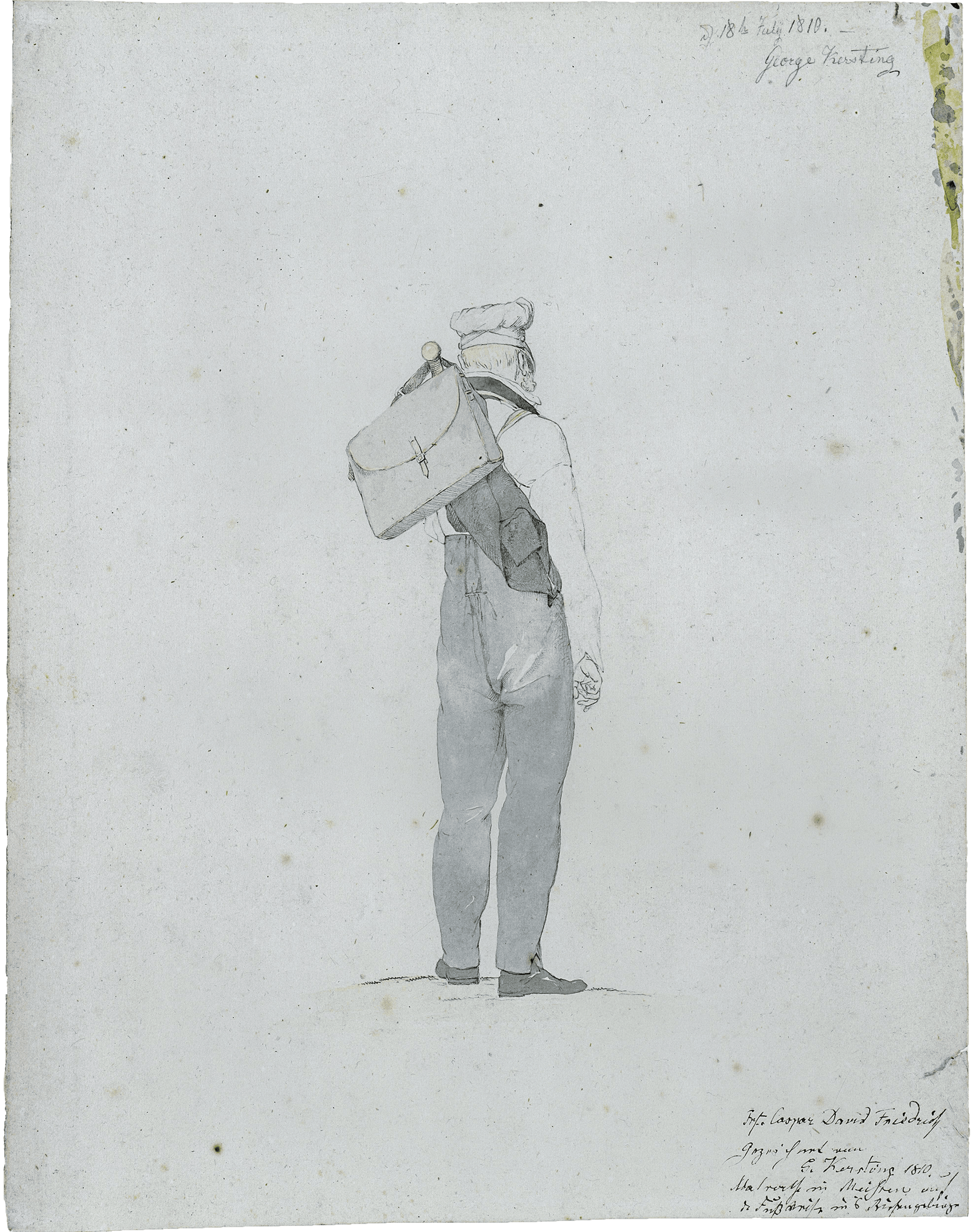Traveling Into the Unknown
Friedrich would go on walking tours on his own or sometimes take just one or two friends with him. He regularly trekked with his friend, the painter Georg Friedrich Kersting. In 1810, they embarked on a “journey by foot to the Giant Mountains” (Riesengebirge) in what is now the Czech Republic – Kersting noted this on the bottom right of this drawing.
On these excursions, Friedrich primarily sought artistic inspiration. He greatly admired the natural world, its forces, and its beauty, studying its forms down to the smallest detail. In doing so, he also saw the great and universal in the small. As a devout Christian, Friedrich likewise wanted to come closer to divine creation through hiking and to experience his faith anew.
“Wandering” or “rambling” was particularly widespread in intellectual circles in Europe – for example, among the Romantics. Their age was characterized by political upheaval, the onset of industrialization, and Enlightenment ideas, which called on the male, *white* individual to think freely. Through wandering, the Romantics sought to return to nature, to the sensual and the emotional. Obtaining a distance from the everyday socialized self was important for them in order to gain new experiences. This is reflected in Friedrich’s art, which is why his works are often considered the epitome of German Romanticism today.

In Friedrich’s age, encountering nature in all its majesty was high on the list of travel motivations. Hiking tourism saw a veritable boom. The goal was to reach the limits of experience – to be confronted with the sublime.
Immeasurably large, overwhelming, threatening – these are the kinds of extreme feelings that might arise when faced with a view from the summit. When hiking, you may feel overwhelmed, small, and powerless in the face of nature. Put a foot wrong and you might slip over the edge. And yet exposing yourself to such a moment is life-affirming, thrilling. That’s when the feeling of “delightful horror” sets in.
According to the philosopher Immanuel Kant, the sublime sees humankind glimpsing its “superiority” over nature through reason and independent thought. You can only enjoy the view in the knowledge that nothing can happen to you from your vantage point. That’s why Friedrich’s Wanderer is shown in a confident pose in the painting.
On his wanderings, Friedrich must have experienced this feeling of the sublime – and transferred it to his picture.